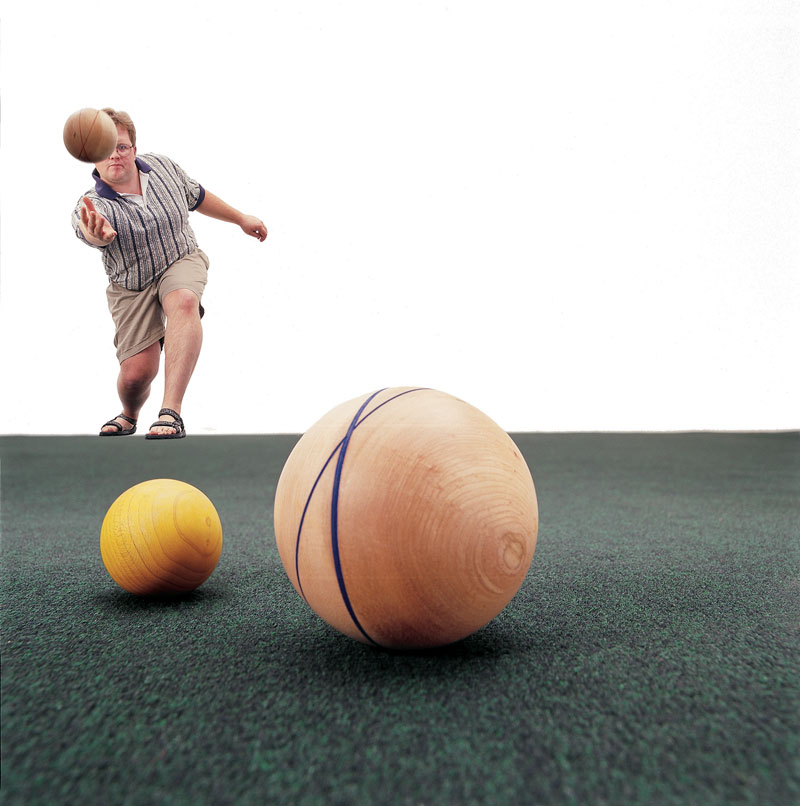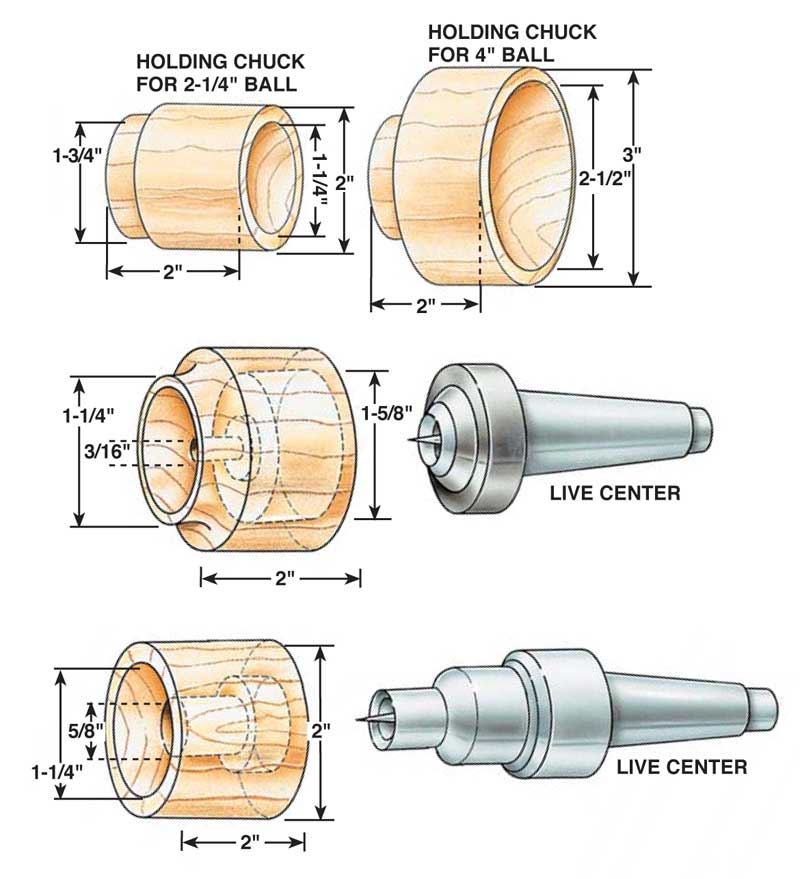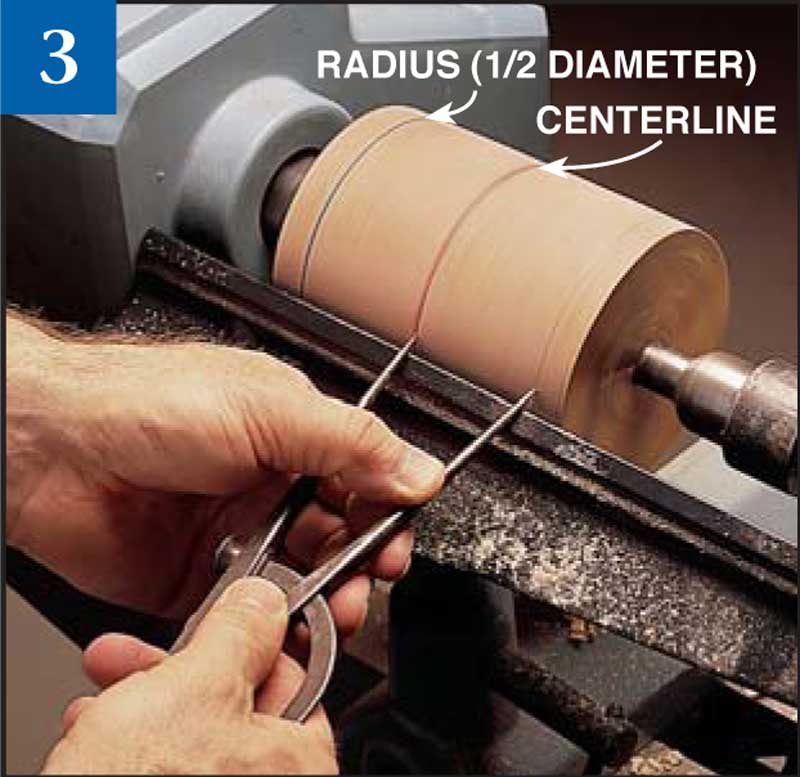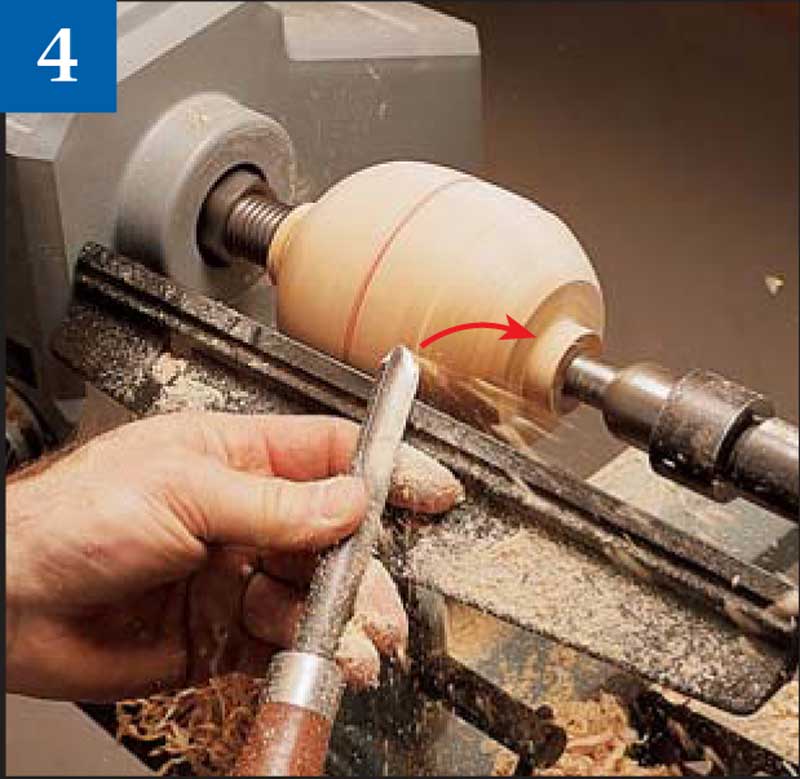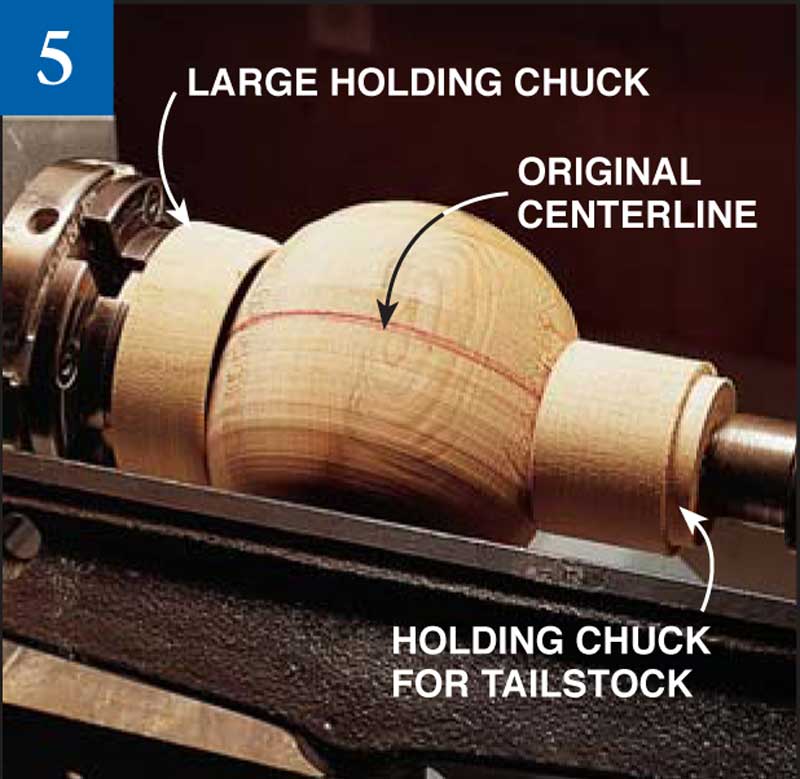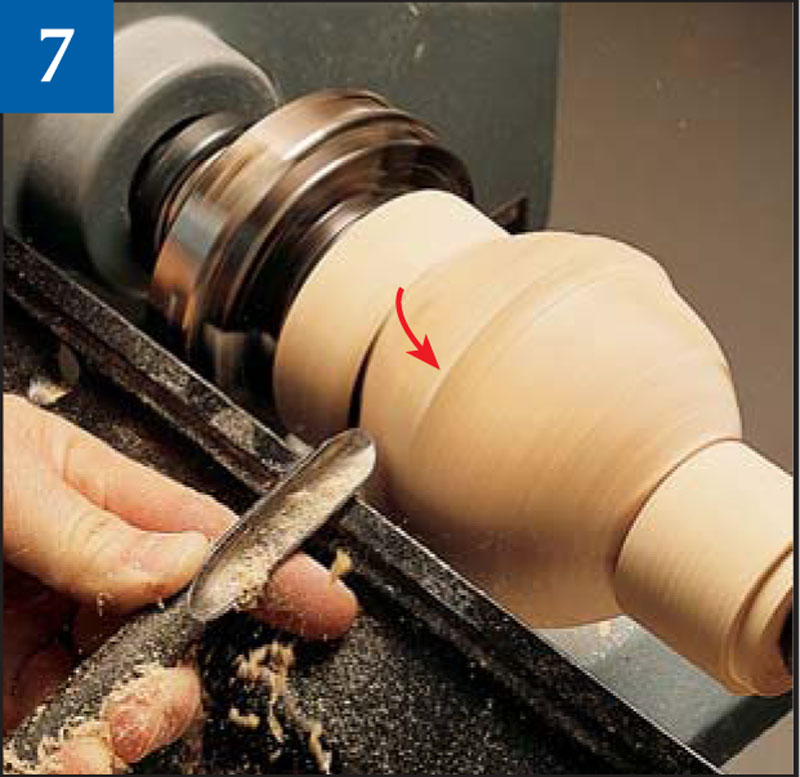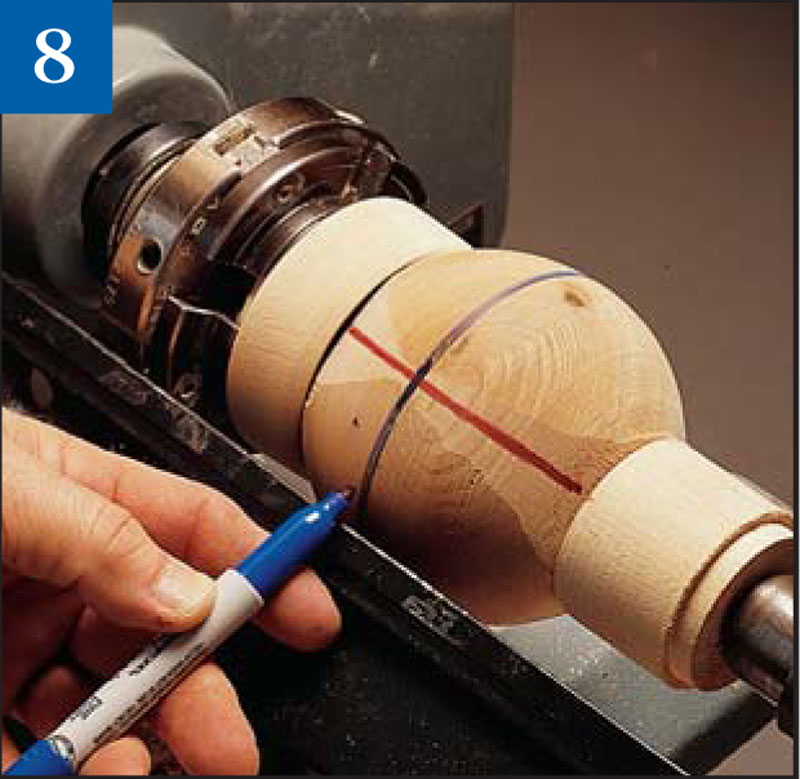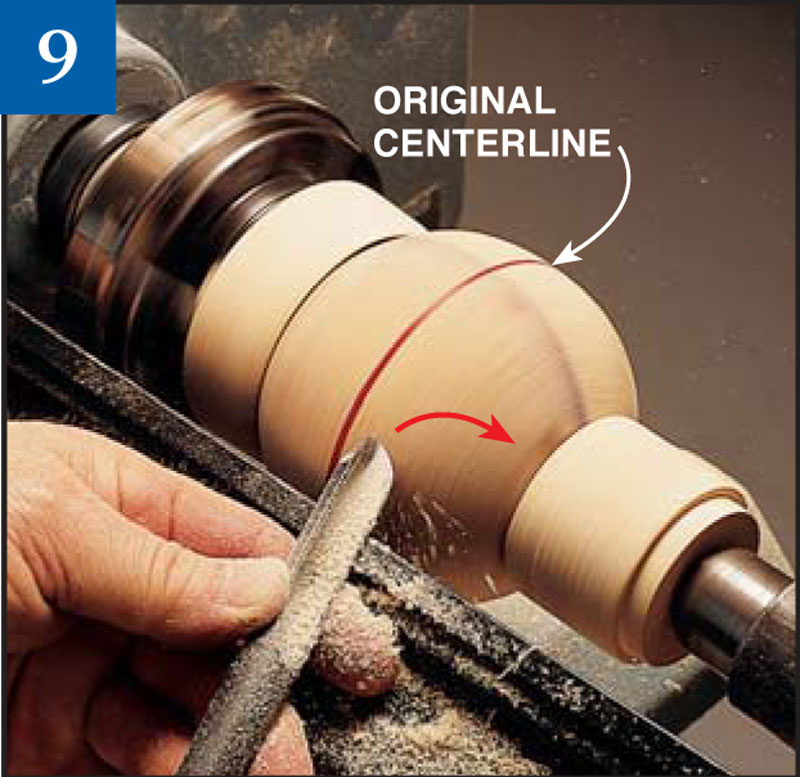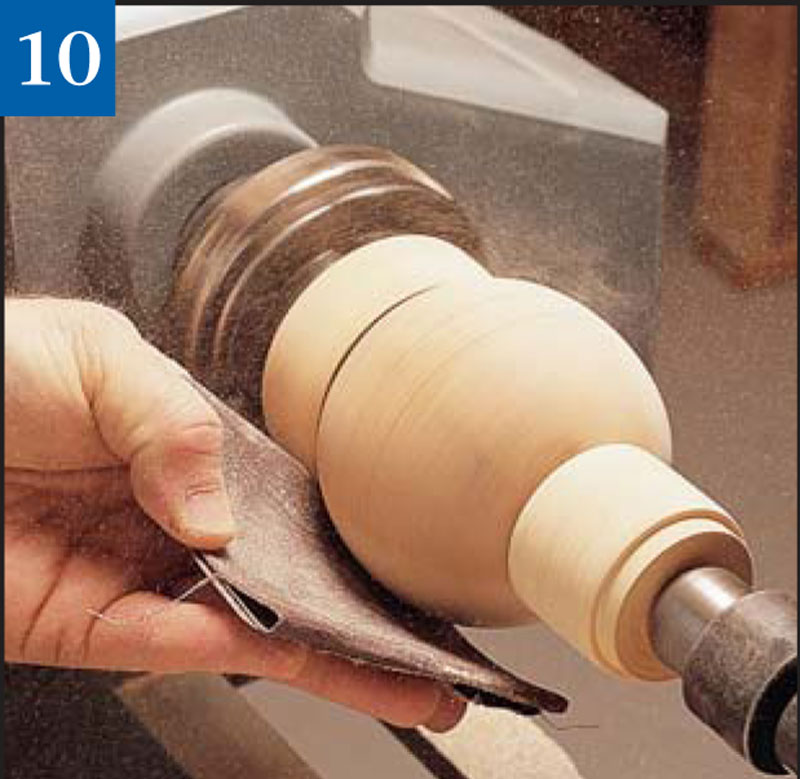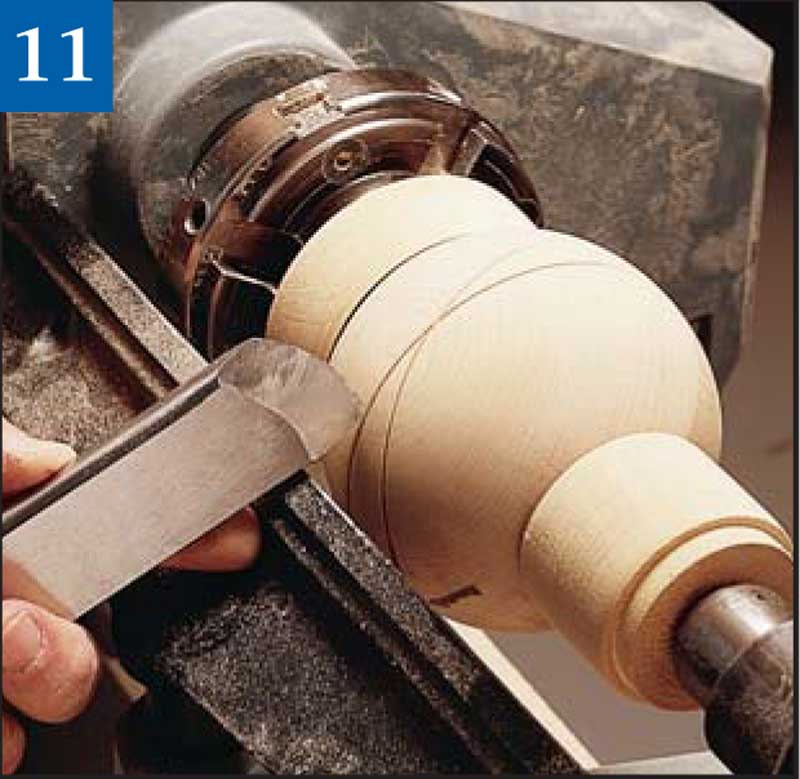We may receive a commission when you use our affiliate links. However, this does not impact our recommendations.
Turning Bocce Balls
By Alan Lacer
Freehand turning of a near perfect wooden sphere without flat spots or bumps is a wonderful challenge for a turner.Whether it’s for croquet, furniture drawer knobs or simply as a decorative object, the wooden sphere is a wonderful exercise in developing a form, tool control and understanding grain direction.
We’ve chosen to make wooden balls for the ancient game of bocce ball. Originating in the Middle East some 7,000 years ago, the game was popular with ancient Greeks and Romans. It hit its heyday in 16th-century Italy, where it was something of a national sport. Much of the vocabulary and manner of play stems from this period.
Bocce Ball Essentials
To play the game you have to make either five or nine wooden balls, in two sizes.One ball, the “pallino”or target ball, should be approx. 2-1/4 in. in diameter, in a contrasting or colored wood. The other balls, or “bocce” that are tossed, should be approx. 4 in. in diameter. Create either a full set with eight bocce or a half set of four,with one-half of each set in distinctive colors or patterns to identify two sides or teams. Within each team you may want to create a crisscross or other pattern to distinguish individual bocce balls.
Wood to Turn
Turn the bocce balls and pallino from a dense hardwood such as hard maple, birch or white oak in either solid or laminated stock. If you laminate, choose glue that is water-resistant and does not “creep”at the seams such as plastic resin or polyurethane.
Here’s what you need:
• Hard maple, 4×4 by 18 in. (makes four bocce balls; buy twice this amount for a full set of 8). Each ball blank should be 4-1/2-in. long.
• Hardwood, 2-1/4 by 2-1/4 by 2-3/4 in. (for one pallino).
• Basswood (or poplar) 3 by 3 by 2-in. in length (headstock side holding chuck for larger ball); two pieces 2 by 2 by 2 (headstock side holding chuck for smaller ball and for tailstock-side holding chuck that fits over the live center).
• 1/2-in. detailing gouge ground to a fingernail shape, roughing gouge, parting tool, 1/2-in. to 1-in. round-nose scraper, 1/2-in. or larger skew chisel.
• Outside calipers with a minimum capacity of 4-1/2 in.
• Dividers or compass.
• Either a scroll chuck or a 3-in. faceplate with 1-1/2-in.- thick piece of face-grain poplar or soft maple.
• Live center for tailstock, spur center for headstock.
• Jacobs chuck and appropriate bit for fitting tailstockside chuck to your live center.
• Acrylic paint in two colors and a small, stiff brush.
• Wood dye.
The Rules of Bocce Ball
Official bocce ball is played on a court of fixed dimensions, often with walls and backstops. What most of us play is an informal version or “lawn bowling.” Here are the basic rules:
• There are two teams, played with two, four, or eight players. In games of two or four players, you can get by with only four bocce balls.The game is a bit more interesting, though, if you play with a full set of eight balls.
• By a flip of a coin or some other means, choose one side to roll the small ball (pallino) out into the playing area. All throws must be made behind a real or imaginary foul line.
• The side that placed the pallino rolls one bocce ball as close to the pallino as possible (even touching it). This becomes the “point ball.”
• The opposing side rolls all of its bocce balls to see if it can come closer to the pallino than the “point ball.”
• The starting team rolls the remainder of its bocce balls to see if can come closer to the pallino than any of their opponents’ balls.
• Points are awarded after all bocce balls have been thrown. A point is awarded for each ball closer than any of the opponents’ to the pallino. Games are played to 12, 16, or 21. Often the winner must win by at least two points.
• Yes, you may hit the pallino, your own team’s previously thrown bocce or the bocce of the opposing team!
For more information, go to sportcraft.com.
Fig. A: Shop-Made Chucks
You have to make three different concave holding chucks to turn these balls. For the headstock side you need two different sizes that fit into your scroll chuck or a recess in a scrap block on your 3-in. faceplate (a “jam chuck,” see Photo 2). On the tailstock side, make a chuck that slips over your live center (two styles are shown as examples). This tailstock chuck works for both size balls.
Click any image to view a larger version.
Bocce ball is played with a “pallino,” the small target ball (far left) and two sets of larger “bocce” balls.We cut thin grooves to identify individual balls and painted the sets in two colors, one for each team.
1. Begin by turning a chuck to hold the balls as they are turned.This one is for the larger balls, and is held at the headstock (Fig. A).Work from the center out with your round-nose scraper to produce a smooth surface. Make a smaller chuck for the headstock to hold the pallino.
2. Turn another holding chuck for the tailstock. It needs to fit over a live center so it can spin freely (Fig. A). Drill or turn out the center of the chuck to match the outside diameter of the live center. Each live center requires a slightly different design.The chuck must be centered and fit snugly.
3. Lay out the size of the ball with dividers or a compass after roughing out the blank to a cylinder. Mark the centerline (red) and two radius lines (blue) that are equal to half the dia. of the cylinder. After marking, reduce the waste outside of the radius lines to approx. 1 in. in dia.
4. Rough cut the cylinder to a very crude ball form using a 1/2-in. detail gouge. Don’t be too zealous in trying to hit the perfect sphere at this point—it is far too easy to cut below the curves of the final sphere. Allow considerable waste material to be trimmed away in the next step.
5. Mount the rough ball between the two holding chucks with the red centerline turned 90 degrees so it’s parallel to the bed or axis of the lathe. Rotate the lathe by hand a few times to be sure both sides of the red line are in alignment.When all seems right, firmly secure the block by tightening the tailstock.
6. A "Ghost Ball" is revealed when you turn on the lathe. By experimenting with your shop lamp and different angles of viewing, you should see a definite ball with a ghost-like appearance inside the spinning blank.With light-colored woods, a dark background often helps to make the ghost more visible. Keep your lathe in the slower speed ranges (400 to 600 rpm).
7. Turn down to the ghost ball, using a 1/2-in. detailing gouge with a fingernail shape. Work from smaller to larger diameters on both sides of the centerline (the ball now has the same grain orientation as a face-grain bowl). Go slowly and gently, with a mixture of cutting and light scraping actions to remove waste surrounding the ghost ball.
8. Draw a new centerline (the blue line) when you’re finished turning.
9. Continue turning with the blue line positioned parallel to the lathe’s axis. The grain is again as we started (indicated by the red line), so work from larger to smaller diameter in order to work with the grain. Gently turn away the waste that was held in the holding chucks. Again, use the ghost ball as a guide.
10. Sand to further refine the shape and remove minor imperfections. Randomly reposition the ball five or six times, sanding lightly between each change of position.
11. Cut narrow grooves on the larger balls with the long point (toe) of the skew chisel. Create a crisscross pattern by changing the axis of the ball.With the lathe spinning, color the grooves with unthinned acrylic paint applied with a stiff brush. Light sanding removes excess paint.
The single pallino (smaller ball) is usually not grooved and can be dyed a bright color for high visibility.
Sources
Note: Product availability and prices are subject to change.
Craig Lossing, 47 Fairmount Dr., Lino Lakes, MN 55014, 651-785-4194, Pre-cut wood for ball making, 4 by 4 by 18 in. hard maple (makes 4 bocce balls); 2-1/4 by 2-1/4 by 2-3/4 in. hard maple (makes 1 pallino).
Woodcraft, woodcraft.com, 800-225-1153, Bright yellow dye for the pallino, #811757.
This story originally appeared in American Woodworker August 2000, issue #81.
Here are some supplies and tools we find essential in our everyday work around the shop. We may receive a commission from sales referred by our links; however, we have carefully selected these products for their usefulness and quality.



